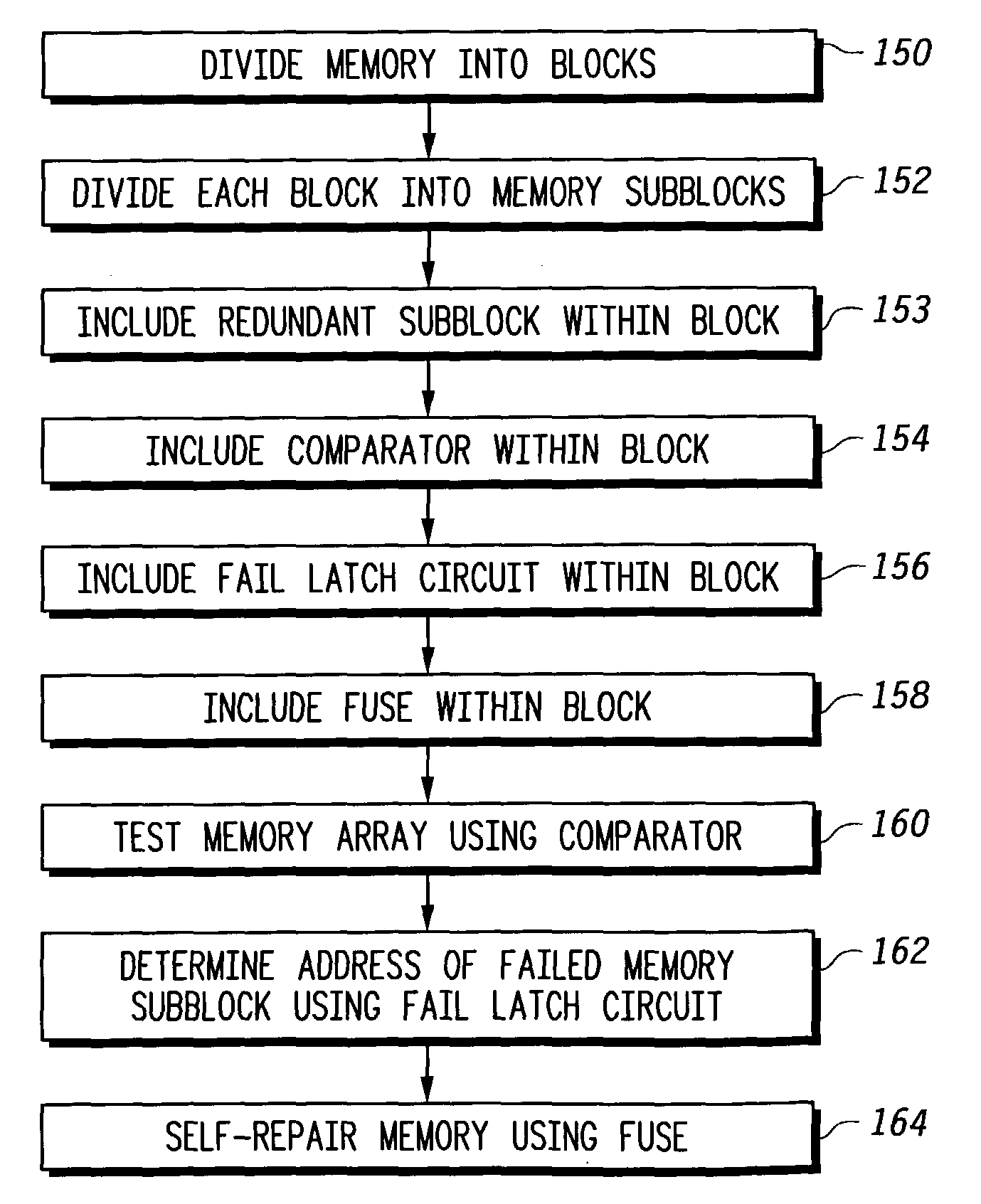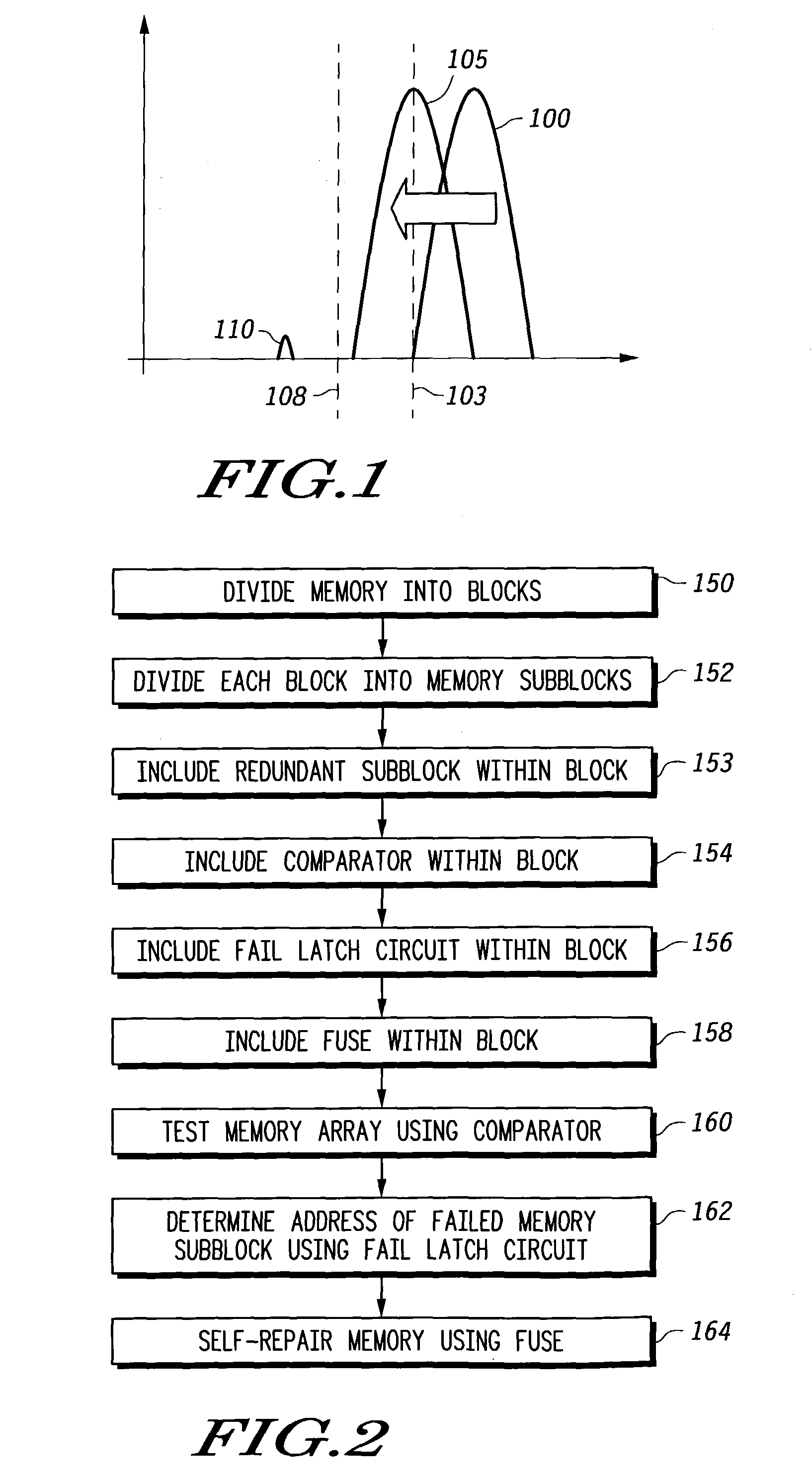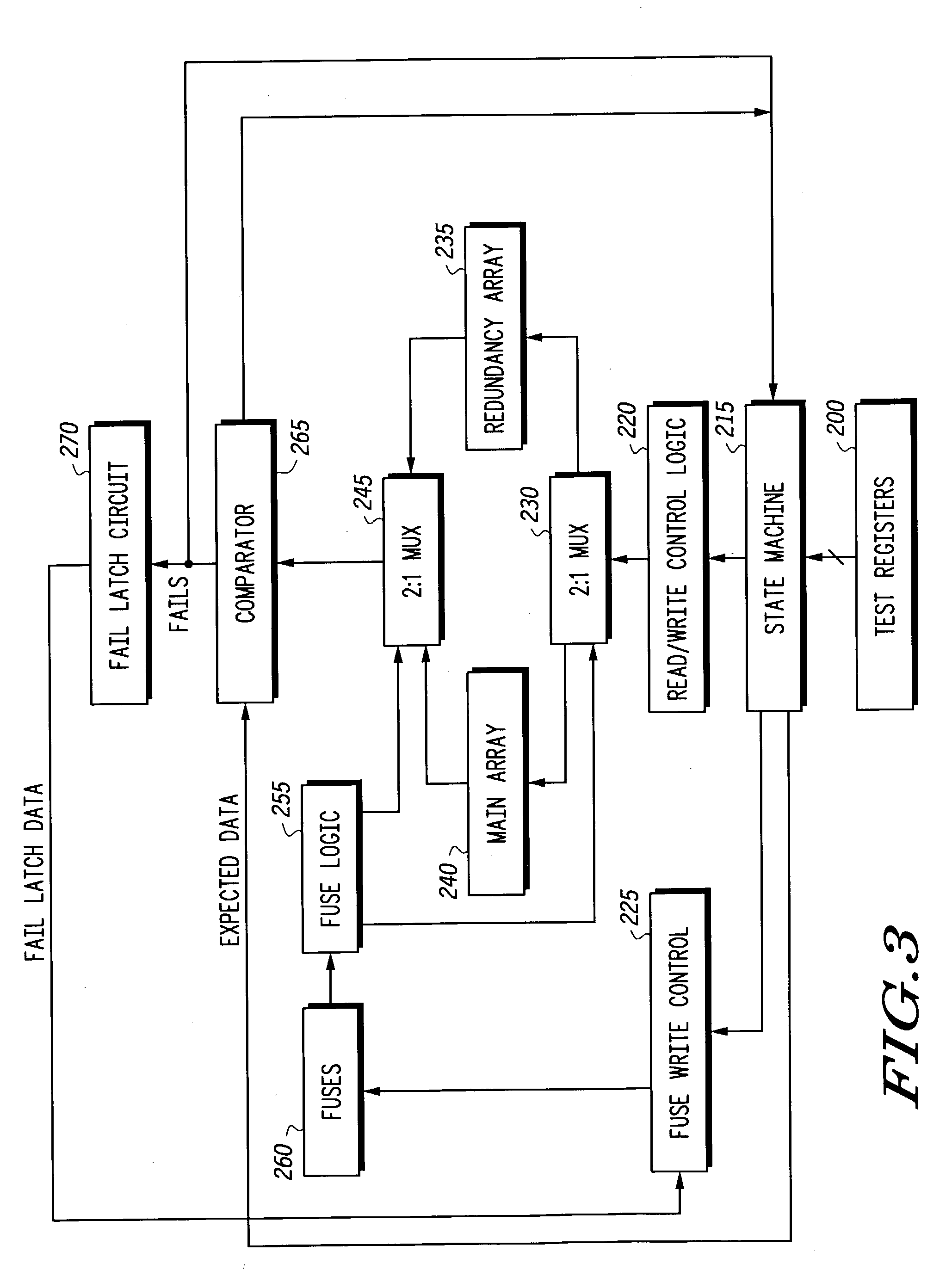Self-repair of memory arrays using preallocated redundancy (PAR) architecture
- Summary
- Abstract
- Description
- Claims
- Application Information
AI Technical Summary
Problems solved by technology
Method used
Image
Examples
Embodiment Construction
[0018] Embodiments of the present disclosure make use of a testing / repair architecture termed the PreAllocated Redundancy (PAR) architecture. As illustrated below, this architecture is particularly well-suited for providing flexible and efficient self test / repair techniques, even when applied to NVMs. Embodiments of this disclosure focus upon the use of the PAR architecture for self-test and repair of NVMs (e.g. the self-repair of a flash EEPROM), although it will be understood that individual or combined techniques from the disclosure may be applied readily to other types of memory.
[0019] Embodiments of the present disclosure may be used in processors with embedded nonvolatile memories and stand alone nonvolatile memories. As memories such as flash arrays become faster and contain higher densities, techniques of this disclosure may become especially beneficial, as will be apparent to those having ordinary skill in the art.
[0020] Before explaining the PAR architecture and its applic...
PUM
 Login to View More
Login to View More Abstract
Description
Claims
Application Information
 Login to View More
Login to View More - R&D
- Intellectual Property
- Life Sciences
- Materials
- Tech Scout
- Unparalleled Data Quality
- Higher Quality Content
- 60% Fewer Hallucinations
Browse by: Latest US Patents, China's latest patents, Technical Efficacy Thesaurus, Application Domain, Technology Topic, Popular Technical Reports.
© 2025 PatSnap. All rights reserved.Legal|Privacy policy|Modern Slavery Act Transparency Statement|Sitemap|About US| Contact US: help@patsnap.com



